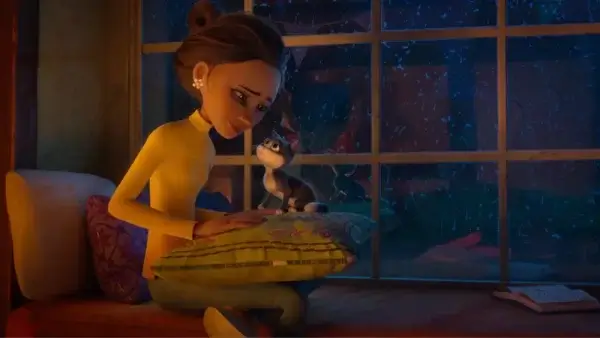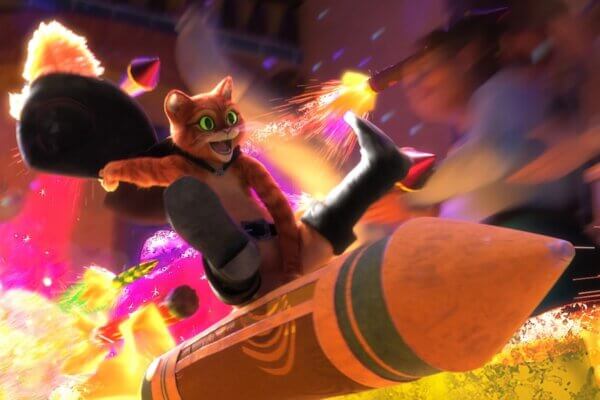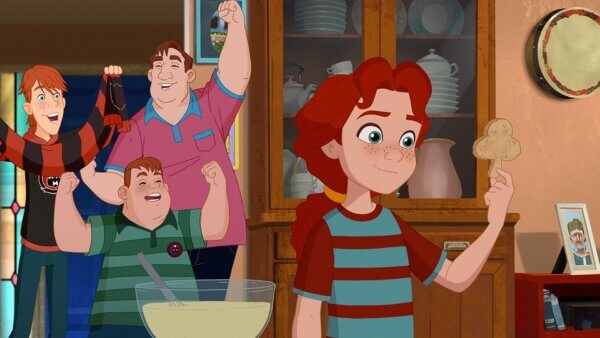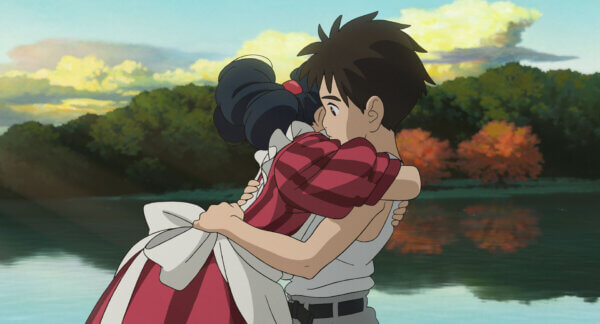10 Lives and Authorship In Animation
On January 20th 2024, 10 Lives premiered at the Sundance festival. The film, directed by former Disney alum Chris Jenkins, tells the story of a privileged cat who has to learn the value of life by being reincarnated into different animals. Featuring the voice talent of comedian Mo Gilligan, Bridgerton’s Simone Ashley, Oscar nominee Bill Nighy and pop star Zayn Malik, the film carries some pedigree. On paper, 10 Lives could shape up to be a good time at the movies. This was not the case.
10 Lives feels like a passionless picture where the animation exudes a lack of care, the character and prop models feel like stock assets and the writing gives some talented actors nothing to work with. While it seems obvious the filmmakers set out with a goal of making a film for kids, it ends up being something that condescends to them. 10 Lives doesn’t trust its audience to go a few minutes without a butt joke or some by-the-numbers slapstick comedy. It panders to what it thinks kids want from a movie when those goalposts have been shifted by films like The Super Mario Bros. Movie and Puss In Boots: The Last Wish and TV shows like Bluey and Ghee Happy whose animation is beautiful and daring.
Films like this are released often, but rarely do they get world premieres at prestigious film festivals. In 2023, Sundance was the home of the premiere for Past Lives, an almost universally acclaimed live action movie that has garnered a Best Picture nomination at the Oscars. Why, when it comes to selecting the only animated feature shown at the festival, are their standards so different?
This attitude has also been reflected in the critical response. While one may expect 10 Lives to be panned, it was largely given a pass. Indiewire graded it at a B-, stating that it proves “you don’t need studio backing to entertain kids,” disregarding an indie animation scene bursting with inventive films aimed at younger audiences.
All involved have proven that they can do better. Jenkins was a part of Disney’s renaissance, contributing to classics like The Little Mermaid and Aladdin. GFM Animation, the studio behind 10 Lives, also produced the acclaimed Greyhound of a Girl, a film with a phenomenal visual identity. Sundance has also premiered animated features like Flee, showing that they can recognise craft in animation when they see it. As critics, we have to hold these institutions to that standard, rather than making up an ephemeral “kid” in our minds that these movies are for.
The consequences of this go beyond having a poor movie at a festival. A poor live action movie at a festival populated by live action movies is an outlier. The only animated movie at a festival being poor reinforces the idea that this medium is simply a genre for kids. This trains both filmgoers and industry decision-makers to dismiss the artistic intent behind all animated films. If a movie is made for kids, what’s the use for an adult to take it beyond its surface level?
That attitude is reflected in this year’s Oscar nominations where no animated film is nominated outside of its own category. Historically, Disney and Pixar have been the dominant animated force at the Oscars, often winning Best Animated Feature and getting nominations in the Best Original Song and occasionally Best Original Screenplay categories. This is due to Pixar having this reputation of making kids films that adults can enjoy too, a marketing ploy designed to have the warm glow of critical respect fall on their films.
This is clearly not extended to other studios making animation. If Best Director is awarding the achievement of translating a specific vision in a director’s mind to the screen, then how is Hayao Miyazaki’s The Boy and the Heron not a stellar example of that? Is Daniel Pemberton’s score for Across the Spider-verse not the kind of experimental piece that The Academy would award if it soundtracked a live-action film? This seeming refusal to acknowledge that animated films have genuine authorship behind them makes a huge impact on what films win awards, which in turn affects which projects get made.
The responsibility to put an end to this trend lies at the feet of critics and the audience. Accepting, or even praising, mediocrity because ‘it’s just for kids’ is anti-art and gives credence to people who dismiss the medium as a whole (who ironically tend to act as guardians of art house cinema).
Being more intentional about highlighting individual artists behind animated films, rather than describing something as the product of a studio factory, will go a long way to garnering wider respect for the medium. Directing, writing, costume design, set design and cinematography are all crafts that apply to animation but are only respected when they appear in live action. Recognising authorship behind animated films should not be an exception but an expectation.
The only way to consistently get great art is to expect great art.





